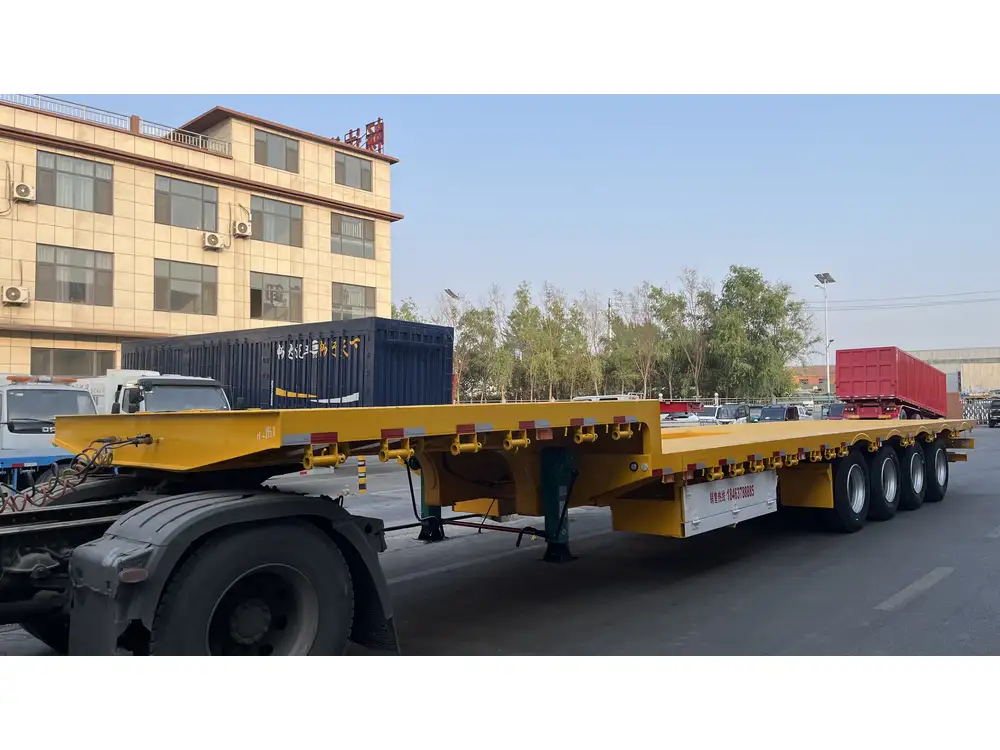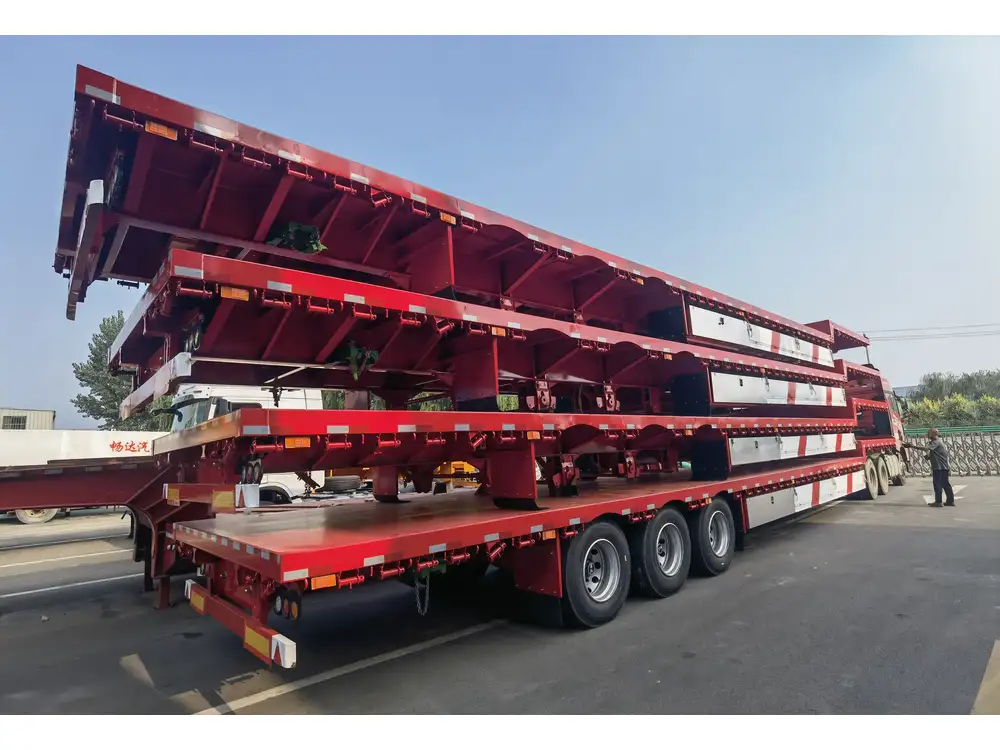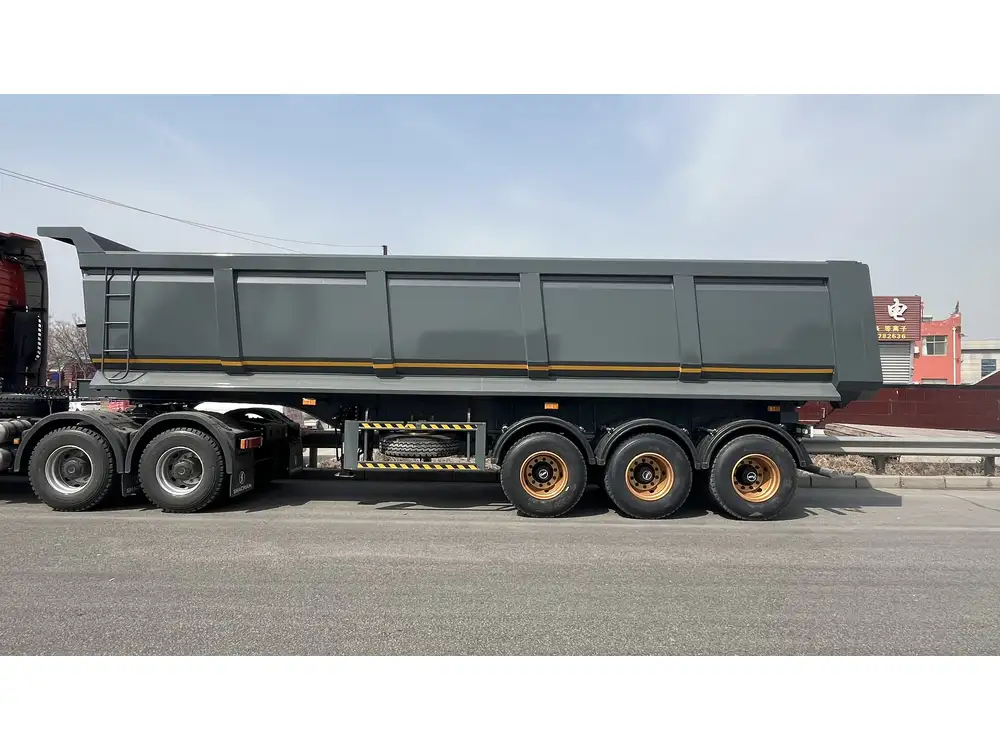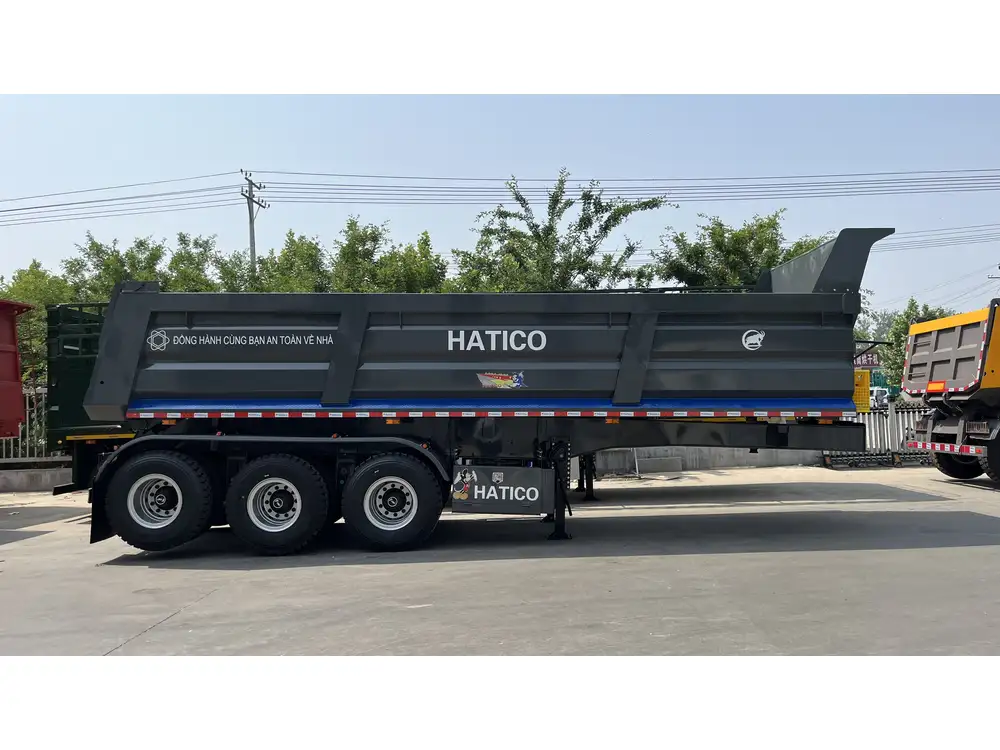In the world of logistics and freight transportation, understanding the specifications of vehicles is crucial. Among these specifications, weight plays a pivotal role in determining the vehicle’s capacity, efficiency, and compliance with transportation regulations. For businesses utilizing trailers, a common query arises: How much does an empty 53-foot semi-trailer weigh? This article delves into the details surrounding the weight, factors influencing it, and the implications for transportation and logistics.
The Standard Weight of a 53-Foot Semi-Trailer
A standard 53-foot semi-trailer typically weighs between 10,000 to 15,000 pounds when empty. The weight can vary based on several factors, including construction materials, design specifications, and trailer types. Here’s a breakdown of the primary types of 53-foot semi-trailers and their typical weights:
| Trailer Type | Approximate Empty Weight (lbs) |
|---|---|
| Dry Van Trailer | 12,000 – 15,000 |
| Refrigerated Trailer (Reefer) | 14,000 – 16,000 |
| Flatbed Trailer | 10,000 – 12,000 |
| Tanker Trailer | 12,000 – 15,000 |
Factors Influencing the Weight of 53-Foot Semi-Trailers
Several elements impact the overall weight of a 53-foot semi-trailer. Understanding these factors is critical for logistics professionals and truck fleet owners aiming for optimal weight distribution and load capacity.

1. Construction Materials
The selection of materials influences weight significantly. Traditional steel trailers tend to be heavier, while aluminum or composite materials can yield lighter structures without compromising sturdiness.
2. Trailer Design
The design of a semi-trailer affects its weight. For instance, a dual-axle trailer might weigh less than a triple-axle variant due to structural differences. Enhanced designs that incorporate aerodynamics can also influence the final weight.
3. Features and Accessories
Additional features, such as rooftop corrugated surfaces for increased aerodynamics, cargo management systems, and integrated refrigeration units, can add substantial weight to the trailer. Each component must be considered during the overall weight assessment.

4. Type of Cargo
While this pertains more to loaded weight, it’s vital for logistics to assess the maximum capacity allowed as determined by the trailer’s empty weight and the legal weight limits imposed in various jurisdictions.
Importance of Knowing the Weight
Understanding the empty weight of a 53-foot semi-trailer is essential for several reasons:
1. Load Calculation
To ensure that the total weight does not exceed legal limits, knowing the empty weight aids in calculating the maximum permissible cargo weight. This prevents overweight fines and maintains safety on the road.

2. Fuel Efficiency
A lighter trailer generally contributes to better fuel efficiency. Companies can stagger their logistics strategy by calculating the total weight to ensure they are not carrying unnecessary excess weight.
3. Compliance with Regulations
Transportation regulations often stipulate maximum weight limits for vehicles on public roads. Each state may have unique regulations, making it crucial to stay informed about legal constraints surrounding trailer weights and cargo loads.
How Do We Measure the Weight?
Measuring a semi-trailer’s weight can be achieved through several effective methods, ensuring accuracy and compliance:

1. Weigh Stations
Most states have designated weigh stations where trucks must stop to be weighed. These stations ensure compliance with legal weight limits and are equipped with sophisticated balances that take into account the load and trailer configuration.
2. Portable Weigh Scales
For on-the-go assessments, using portable weigh scales can be practical for operators wishing to measure their trailers before entering weigh stations to preempt any fines or legal issues.
3. Axle Weighing
Each axle of a semi-trailer can be weighed independently. Understanding the weight distribution between axles is crucial for maintaining balance and compliance with road regulations.

Real-World Implications of Trailer Weight
Understanding the empty weight of semi-trailers extends beyond mere curiosity—it has profound implications for logistics, safety, and economic efficiency. Consider these scenarios:
1. Overweight Consequences
A fleet operating overweight vehicles risks incurring fines, losing business, or facing vehicle damage due to strain on the axle structure. The implications of running overweight can lead to derogatory audits and affect insurance policies.
2. Enhancing Fleet Management
Having accurate data on trailer weights allows for optimized fleet management. Logistics managers can better plan routes and loading techniques based on the combined weight of trailers and loads, streamlining operations.

3. Environmental Impact
By ensuring that trailers are carrying optimal loads, companies can minimize fuel consumption and decrease emissions. Responsible weight management can contribute to a lower carbon footprint.
Frequently Asked Questions
1. What is the maximum legal weight for a loaded 53-foot semi-trailer?
In the United States, the maximum legal weight limit for a semi-trailer is typically 80,000 pounds on interstate highways. This includes the weight of the truck, trailer, and cargo. Understanding the empty weight allows for calculating the maximum allowable load quickly.

2. How do regulations vary by state?
Each state may impose different weight limits for semi-trailers, especially for specific road types (e.g., highways versus local roads). It is imperative to be familiar with laws specific to each region where the trailer is operated.
3. Can I modify a trailer to reduce weight?
Modifications can often be performed to reduce weight, such as using lighter materials or removing unnecessary accessories; however, it’s essential to consider how these changes may affect the trailer’s structural integrity and performance.
4. What is the role of technology in weighing?
Advancements in technology, including onboard scales and telematics, allow fleet managers to monitor weight in real-time. This capability aids in enforcing compliance and optimizing load capacities as needed.

Conclusion: Why Weight Matters in Transportation
Understanding the empty weight of a 53-foot semi-trailer is not merely an exercise in curiosity; it represents a crucial facet of logistics management. Each pound matters, from complying with legal restrictions to optimizing fuel efficiency and ensuring load safety. By comprehensively grasping the dynamics of trailer weight, companies can position themselves for greater operational success, creating safer, more efficient transparency in their cargo transport operations.
In summary, knowing how much an empty 53-foot semi-trailer weighs is essential for effective logistics management, regulatory compliance, and overall operational efficiency. Companies that prioritize understanding these metrics can reap significant benefits in their transport operations.



